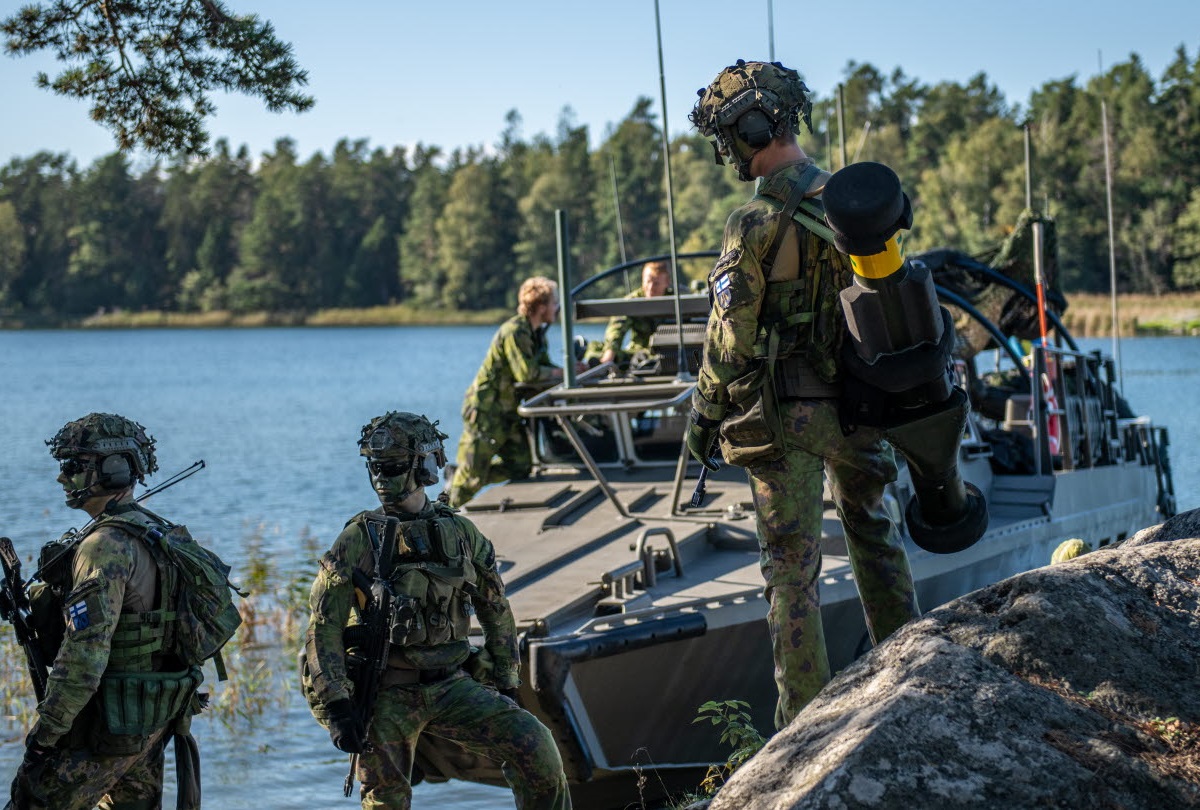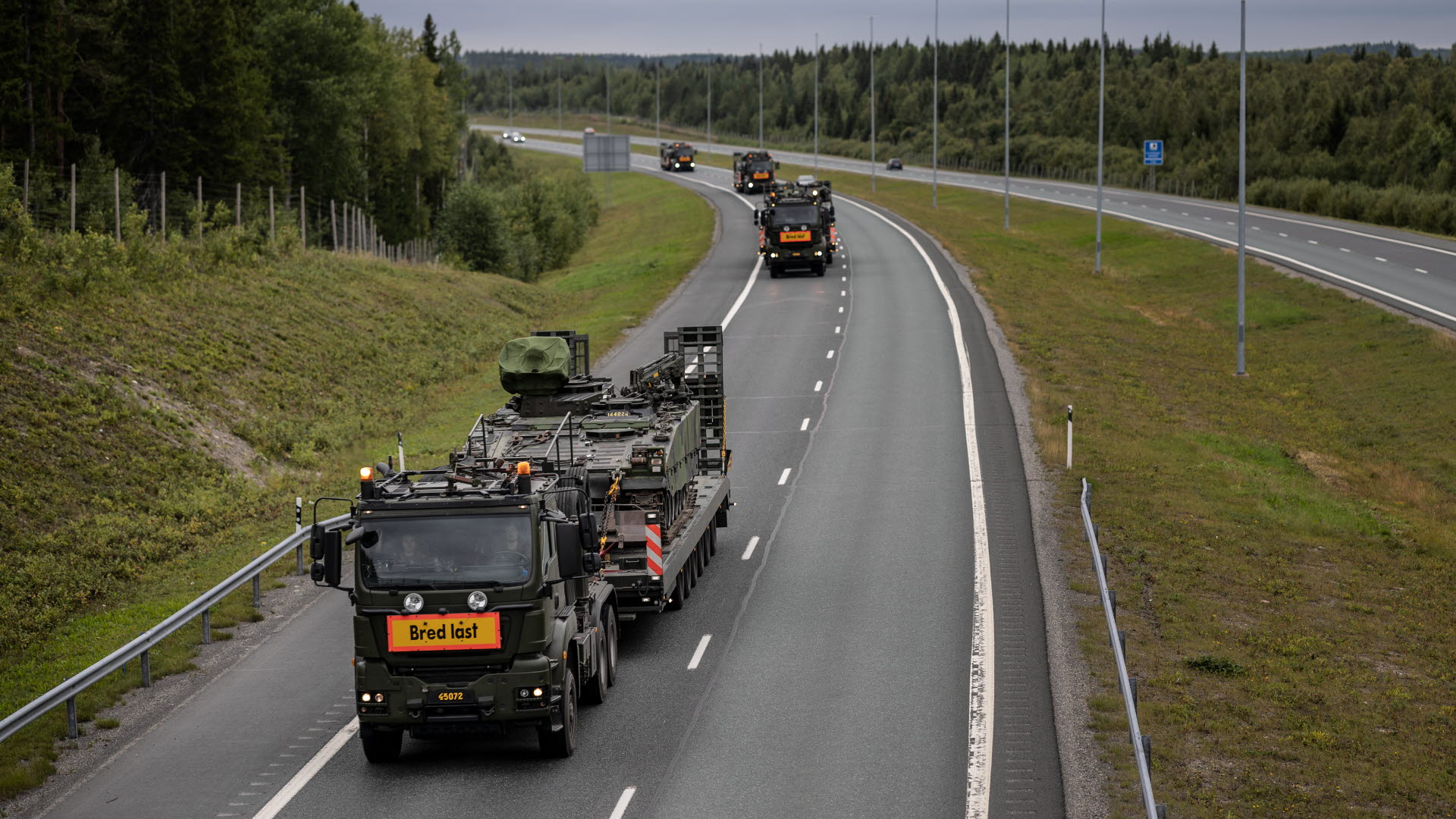Analyzing The Potential Of A Joint Swedish-Finnish Military Force

Table of Contents
The potential formation of a joint Swedish-Finnish military force has sparked considerable debate. This article analyzes the potential benefits and drawbacks of such a union, considering its implications for regional stability, defense capabilities, and the broader geopolitical landscape. We will delve into the strategic advantages, logistical considerations, and political challenges inherent in this ambitious undertaking, examining the feasibility and desirability of a unified Nordic defense.
Strategic Advantages of a Unified Force
A combined Swedish-Finnish military force offers several significant strategic advantages, bolstering regional security and enhancing defense capabilities.
Enhanced Deterrence
A unified force significantly increases deterrence against potential aggressors. This enhanced deterrence stems from several key factors:
- Increased manpower and resources: Combining the military assets of Sweden and Finland creates a substantially larger and more capable force, presenting a more formidable challenge to any potential adversary. This increased size and strength would deter attacks by making any invasion far riskier and more costly.
- Improved territorial defense capabilities: The combined forces would allow for a more effective distribution of resources across a wider geographical area, improving the defense of both nations' territories, particularly in the strategically important Baltic Sea region. This enhanced coverage would significantly strengthen overall defense posture.
- Stronger signaling of collective resolve to potential adversaries: A unified military sends a clear signal of unwavering commitment and solidarity between Sweden and Finland, thereby deterring potential aggression. This collective resolve is a powerful deterrent in itself.
Improved Operational Efficiency
Pooling resources leads to significant cost savings and improved logistical coordination:
- Shared procurement of equipment and supplies: Joint procurement of weapons systems, vehicles, and other supplies would lead to economies of scale, reducing overall costs and streamlining the supply chain. This efficiency is crucial for maintaining a modern and well-equipped military.
- Joint training exercises and improved interoperability: Regular joint training exercises would improve interoperability between the two forces, ensuring seamless cooperation in the event of a conflict. This interoperability would greatly increase effectiveness in wartime scenarios.
- Reduced duplication of efforts and enhanced resource utilization: By avoiding duplication of effort, a combined force optimizes the use of resources, resulting in a more efficient and effective military organization. This optimized resource utilization is crucial in maximizing the impact of military spending.
Strengthened Regional Security
A combined military strengthens regional security in the Baltic Sea region and contributes to NATO's overall defensive posture.
- Enhanced surveillance and response capabilities: The larger combined force would allow for improved surveillance and quicker response times to potential threats in the Baltic Sea region, contributing to overall stability. This would bolster regional security and act as a safeguard against potential threats.
- Greater stability and reduced risk of conflict: A stronger, unified military presence acts as a deterrent against aggression and contributes to overall regional stability, thereby reducing the risk of conflict. This is a critical goal of any strong military alliance.
- Increased cooperation with other Nordic and Baltic countries: A joint Swedish-Finnish force could act as a catalyst for greater cooperation with other Nordic and Baltic countries, further enhancing regional security through increased collaboration and information sharing. This strengthened regional cooperation is key to overall stability.
Logistical and Practical Challenges
Despite the numerous advantages, a joint military force faces considerable logistical and political hurdles.
Integration of Military Structures
Merging distinct military structures presents a significant organizational challenge:
- Potential compatibility issues between military equipment: Differences in equipment standards and weapon systems between the Swedish and Finnish militaries require careful consideration and potentially substantial investment in upgrading or standardizing equipment. This process requires careful planning and resource allocation.
- Challenges in harmonizing different organizational cultures and procedures: Integrating distinct military cultures, organizational structures, and operational procedures requires careful management and a commitment to cross-cultural understanding. This process is complex and time-consuming.
- Need for significant investment in infrastructure and communication systems: Establishing seamless communication and coordinating logistical support across a larger, unified force demands significant investment in modern infrastructure and communication systems. This investment is critical for efficient operational capabilities.
Political Considerations
The political dimensions of integration pose significant challenges:
- Public opinion in both Sweden and Finland towards military integration: Securing public support for such a significant change is crucial. Public opinion polls and engagement campaigns are essential for success.
- Navigating potential disagreements on strategic priorities and defense policies: Differences in strategic priorities and defense policies between the two nations need to be carefully addressed and resolved to ensure a unified strategic direction. This requires careful diplomacy and compromise.
- Maintaining parliamentary support and public consensus throughout the integration process: Sustaining political support throughout the lengthy integration process requires continuous communication, transparency, and a clear vision of the overall goals. This is crucial for the long-term success of the venture.
Economic Implications
The financial costs associated with integration must be carefully considered:
- Cost-benefit analysis of merging military capabilities: A thorough cost-benefit analysis is required to ensure that the potential economic benefits outweigh the investment costs. This is crucial for securing necessary funding.
- Potential for economic benefits through economies of scale: While initial costs will be high, long-term economic benefits can be achieved through economies of scale in procurement and maintenance. These benefits must be thoroughly analyzed and communicated.
- Securing government funding and international support: Securing sufficient government funding and potential international support will be crucial for the project's success. This requires a robust financial plan and international engagement.
Conclusion
The potential creation of a joint Swedish-Finnish military force offers significant strategic advantages, but also presents considerable challenges. While a unified defense force promises enhanced deterrence, operational efficiency, and regional security, meticulous planning and considerable political will are essential for its success. Further research and open dialogue are crucial to fully understand the complexities and determine the viability of this ambitious project. A thorough analysis of both the potential benefits and drawbacks is necessary to make informed decisions regarding the future of Nordic defense cooperation and the viability of a joint Swedish-Finnish military force. Only through comprehensive consideration of these factors can we effectively assess the potential of this significant undertaking.

Featured Posts
-
 The Pan Nordic Army A Combined Strength Of Swedish Tanks And Finnish Troops
Apr 22, 2025
The Pan Nordic Army A Combined Strength Of Swedish Tanks And Finnish Troops
Apr 22, 2025 -
 Razer Blade 16 2025 Review High End Gaming On An Ultra Thin Design
Apr 22, 2025
Razer Blade 16 2025 Review High End Gaming On An Ultra Thin Design
Apr 22, 2025 -
 Investment Opportunities A Geographic Analysis Of New Business Hot Spots
Apr 22, 2025
Investment Opportunities A Geographic Analysis Of New Business Hot Spots
Apr 22, 2025 -
 New Business Hot Spots A National Map And Analysis
Apr 22, 2025
New Business Hot Spots A National Map And Analysis
Apr 22, 2025 -
 Brace For Impact Stock Markets Uncertain Future And Investor Concerns
Apr 22, 2025
Brace For Impact Stock Markets Uncertain Future And Investor Concerns
Apr 22, 2025
